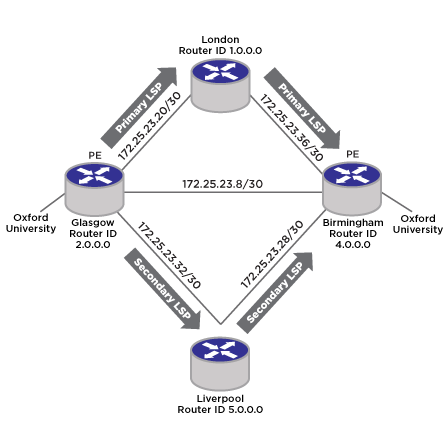RSVP-TE Configuration Example
RSVP-TE LSPs comprise profiles, paths, and the actual LSP. This section describes how to configure an RSVP-TE LSP.
Configuring RSVP LSPs is a multi-step process with some optional steps, depending on the specific requirements of the LSP. Conceptually, a number of mandatory elements must be configured to create an RSVP-TE LSP. In addition, you can also configure optional elements. In certain configurations, there are also order dependencies.
The profile contains constraints that you might wish to apply to the LSP. These constraints can affect the path selected across the MPLS domain in order to meet those constraints. Examples of profile parameters include bandwidth, setup, and hold priority relative to other configured LSPs.
The path can be used to specify the explicit path across the MPLS domain that the LSP should follow. This is done using EROs. An ERO is an object, sent as part of the LSP setup request (path message) that explicitly specifies the part of the path across the MPLS domain the setup request should follow. You can configure both loose and strict EROs in a path.
Certain elements of configuration are order dependent. For example if you specify a profile or path when creating an LSP, those path or profile definitions must already exist. Similarly a path must exist before an ERO is created, as the ERO is added explicitly to the path.
The typical steps used to configure and verify an RSVP-TE LSP are as follows:



